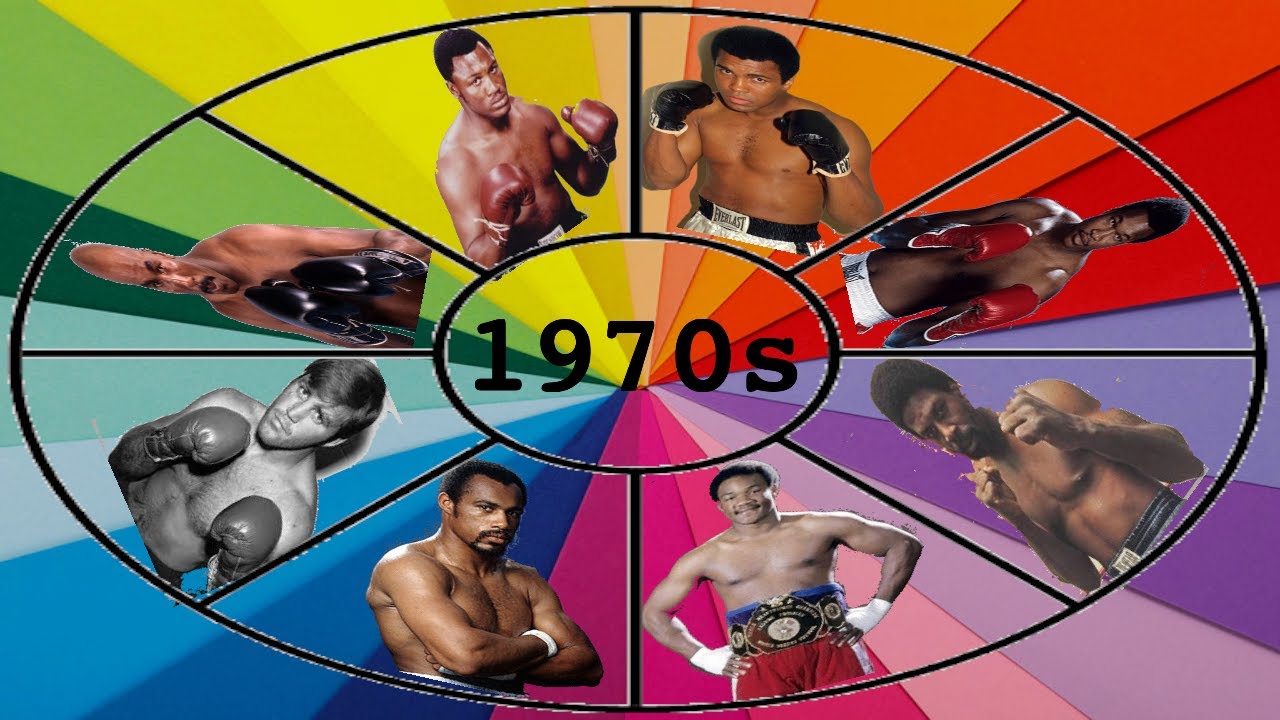Greetings boxing fans. The Golden Age of heavyweights has left an impact that lingers over boxing to this very day. An era of gladiators that all locked horns. It began coming off of the heels of Muhammad Ali’s exile with the heavyweight title splintered and blossomed into a tremendous 10 year stretch of instant classics, settled rivalries, and historical landmarks.
The heavyweight championship was unified for the majority of the decade. Joe Frazier rose from the ashes of Muhammad Ali’s exile and the division maintained its integrity until the Leon Spinks upset near the end of the decade that set the stage for “The Lost Generation”.

The 70s would prove to be the end of the “two-belt” era, an era in which undisputed champions were more common than not as opposed to today. The WBC and WBA held a collective, iron grip on prizefighting, one which the future American based sanctioning body, the IBF/USBA, would look to get in on. Though the seeds of the IBF are rooted in the mid-70s, it would come to true prominence in the 1980s thanks to the “Easton Assassin” Larry Holmes.
Featured in this chronology are the illustrious careers of Muhammad Ali, Joe Frazier, George Foreman, Ken Norton, Larry Holmes, and many more. Ali looked to prove all over again that he was the “Greatest” while battling eroded skills and fledgling health. Frazier stamped his reputation as the hardest working man in boxing while battling potential blindness and his blood-rival Muhammad Ali. Foreman played the big bad guy, battling mental health before reversing the narrative 20 years later after finding God. Norton turned his fortune around by using an often overlooked, God-given gift: he used his mind to “think” and therefore grew “rich”. Holmes found himself sandwiched between two eras and suffers from being overlooked and underrated to this very day.. All these and many more narratives, including a brief touch on the untimely demise of both Sonny Liston and Oscar Bonavena, unfold over the 1970s..
Ali, Frazier, and Foreman all fought one another, putting on four (out of six total bouts) of the most significant championship bouts in the history of the sport. The Fight of the Century, The Sunshine Showdown, The Rumble in the Jungle, and The Thrilla in Manila are all covered in significant detail so as to portray how profound they were to contemporary boxing fans.
The “rock, paper, scissors” (Ali, Frazier, and Foreman; order them as you please) of the decade may make the 70s appear more top heavy and less competitive in comparison to a decade like the 90s, but a closer look reveals that there were many contenders who offered stiff opposition. Contenders like Ken Norton, Larry Holmes, Jimmy Young, Ron Lyle, Earnie Shavers, Joe Bugner, Jerry Quarry, and Oscar Bonavena never made it easy for the “main players” and very well could’ve been champions in any other era. The 70s also saw past contenders and champions like Floyd Patterson, Cleveland Williams, George Chuvalo, Buster Mathis Sr, and Henry Cooper hang up the gloves. Contenders and champions in the making would likewise debut in the 70s, including Mike Weaver, Tim Witherspoon, Pinklon Thomas, John Tate, Trevor Berbick, and Gerry Cooney.
Amateur boxing is also touched on with a brief look at the 1972 and 1976 Olympic heavyweight boxing finals. Teófilo Stevenson managed to become a national icon for his home country of Cuba by focusing his efforts on winning the gold three times (’72, ’76, ’80), refusing to go pro and reap the benefits of a lucrative fight with cash-cow Muhammad Ali. Stevenson may have gone on to win more gold if certain political circumstances hadn’t come up.
This documentary also pays due respect and honor to the gladiators of the past who passed on in the 70s. They include names like Ezzard Charles, James J. Braddock, and Gene Tunney.
As an easter egg for boxing fans, the two “ROCKY” films of the 70s (Rocky, Rocky II) are briefly covered in correlation to the events of the boxing scene at the time. Sylvester Stallone’s rise is an inspirational tale that couldn’t be overlooked in the grand scheme of the Cinderella tale that is professional boxing.
Before the days of the Don King-cursed “Lost Generation” of the 1980s and the end of the two belt era, there was a time where there was no virtually ducking or heavy politics in place to ruin the integrity of the sweet science. It was the true end of the “Dream Match” era; this retrospective documentary looks to showcase why the 1970s really was the “Golden Age” for heavyweights and not just an overhyped, nostalgia-based circus show who’s best warriors would be easily vanquished by modern fighters.
My father was around for all of these fights and made sure to instill in me the significance of this era. Boxing isn’t about being a barbarian, it’s about respect, honor, and growth; being a “real” man. I hope this window into our storied past, helmed by boxing’s marquee division at its apex, can give drive home the beauty of the sweet science. Enjoy the video, boxing fans.
Written, narrated, and produced by TheCharlesJackson; presenting: A Timeline of the 1970s Heavyweight Division.
-TheCharlesJackson (December 3, 2021)

Ali, Frazier, Foreman, Norton, Holmes, Lyle… those guys never thought twice about climbing in the ring with each other. Old school, they don’t make them like that anymore.
Without question, the 70’s era was the greatest and had the deepest talent in Boxing history. Men were Men back then, fighters chose their path, rather than promoters protecting their fighters path. They fought the best of the best, in their prime, multiple times if need be, because they took pride in knowing who the best was amongst them. And these legends went as much as 15 Rounds.